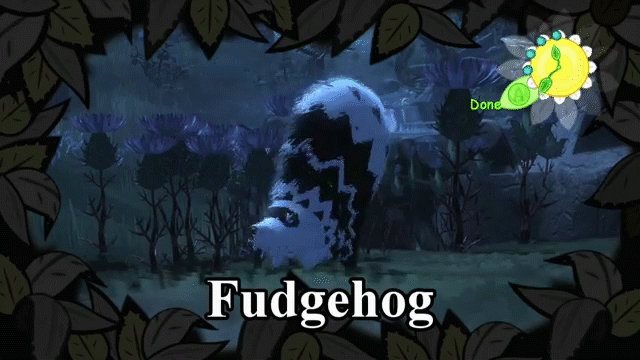If you know me, you know my obsessions with the world of Red Dead Redemption 2. I feel like a part of it, and it always welcomes me back in with open arms and a fresh plate of chocolate chip cookies. This cowboy sim is exactly what I wanted after Red Dead 1, a more in-depth characterization of the lawless Wild West coming to an abrupt end around me. I take the reigns as Arthur Morgan, a tall, dark, and handsome outlaw that is always on the run from something. He and his posse (the Dutch van Der Linde gang) travel from stunning location in the middle of nowhere to other gorgeous location next to a lake. Each of the gang’s change of address is accompanied by an in-tune melody and engaging scenery, so each one of these requires a steady, panning camera that soaks in all of the lighting and color palettes. This camera system has pushed the boundaries of what we thought an in-game camera could do. It is smart, magical, and polished into a fine addition to this masterpiece’s mechanics. Let’s talk about Red Dead Redemption 2’s impeccable camera.
Cinematic mode slaps.
The most obvious innovation is what the game calls “Cinematic Mode”. By clicking in and holding down on the touch pad on a PS4 controller (I assume it would just be the back button on an Xbox controller), the game removes all HUD information and the screen shape shifts into a cinematic camera, complete with black bars and all. This camera is designed to allow the player some breathing and healing time, all while always keeping the player within an engaging shot of the world. Be it within the rule of thirds, a point of reference of color, or if an object (like the occasional tree or shrub) covers most of the player, the camera will dynamically cut to a better angle that fulfills these requirements. I can’t tell you what percentage of my 80 hours playing Red Dead have been lost to setting a random marker on the map, letting my white Arabian named Roach (shout out to The Witcher: Wild Hunt) jaunt herself there, and watching Arthur steer her in Cinematic Mode. With a game this beautiful, it’s no surprise this feature was necessary. It’s the best form of fast travel I’ve seen in a game, because it still feels like I’m a part of the world, even if it is just one big loading bar…
Impressively, the camera seems to always keep Arthur in the rule of thirds of the camera’s angle at all times. As the player spins the camera either left or right, it will always keep Arthur between the left and right side’s rule of thirds. It’s a small touch, but a fine one nonetheless.
Taking ‘grammable pics is as easy as 1…
2…
3…
An obvious addition for this version of the world was to add in camera mode. You know, the one that lets you put your characters in goofy poses and silly faces all to break the fourth wall and capture one decent selfie that you’ll never see again for the rest of your life? Well Red Dead 2 does it better.
How? It gives Arthur Morgan a semi-accurate camera for the historical setting, sepia tone and all. By treating this camera as a tool at Arthur’s disposal, players can easily whip out the device, snap a few pics to add to their Rockstar Club wall, then put it away in a breeze and get back to the lawlessness of (cow)boyhood.
Movie… or Red Dead 2?
Film… or Red Dead 2?
For cut scenes, Rockstar has fine-tuned the camera to double as an Oscar-worthy cinematographer. During certain points in missions, the game takes control to create immaculate imagery on-screen. With so many great shots in my collection, I decided to prove my point with two of my most recent screenshots (shown above) taken just one main story mission apart from each other.
If I had to pick a gripe, I would want the ability to eliminate certain camera fields of view from my camera’s system entirely. In total, the following 4 views are available to the player: first-person, over the shoulder, full body, and zoomed out. Between opting for first-person view in my campsite and full body for everything else, I never end up using over-the-shoulder or zoomed out for anything. Having the ability to only switch between my favorite two views would minimize my annoyance at tapping frantically to get back to full body from first person in certain situations. That being said, the ability to auto-remove first-person while on horseback is a nice touch in the options menu. 10/10 would use this camera system again and again to stare into Roach’s eyes before we wreak havoc together in the Wild, Wild West.
The finest beast in all the land.
First image borrowed from Gamespot. All other images captured in-game on PS4 Pro.
















![[1] Strong opinions incoming…](https://images.squarespace-cdn.com/content/v1/5a2ea8c8017db2454c71d219/1606378171157-YBUNGREKHXMS5B7JAU8B/YUaWuKQ.jpg)
![[2] Arthur Morgan’s beard grows with or without you in Red Dead 2.](https://images.squarespace-cdn.com/content/v1/5a2ea8c8017db2454c71d219/1554317829917-ZTVRO7239REGCMXYLBPD/bU2LFftsWMwjQDqZ9S8VNZ-1200-80.jpg)
![[3] Lifeline’s intricate detailing and character design shines bright… but does it even matter?](https://images.squarespace-cdn.com/content/v1/5a2ea8c8017db2454c71d219/1554318004351-LF4GS1XIPTN9VOZWWJ2A/apex-section-bg-legends-lifeline-xl.jpg.adapt.1920w.jpg)
![[4] Ellie was a scared little girl back then…](https://images.squarespace-cdn.com/content/v1/5a2ea8c8017db2454c71d219/1554318282842-CDWPZNPLWKXOURJYCDFL/jpg)
![[5] Ellie is a badass now.](https://images.squarespace-cdn.com/content/v1/5a2ea8c8017db2454c71d219/1554318319022-0LZAVIPBNHP4KMBHD3FI/maxresdefault.jpg)


